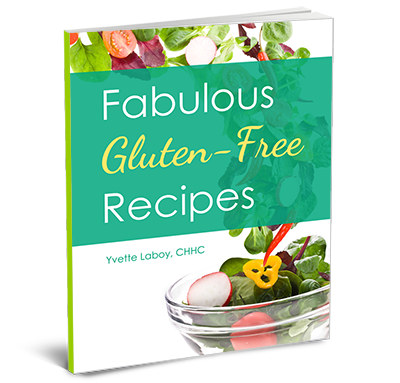Just because Summer’s over it doesn’t mean you need to avoid the produce section. With the fall nip in the air and the holidays near it’s a great time of year to up the nutritional value of your meals while enjoying some of the great foods that are in season.
- Apples: One of the most popular fall fruit. You can find many ways to work apples
 into your diet. They have always been associated with good healthy. Remember the old adage “an apple a day keeps the doctor away”. Apples are low in calories, the skin of the apple is enriched with Quercetin, a powerful anti-oxidant, (Don’t discard the skin – buy organic to avoid pesticide residue and give it a good washing.) Apples are high in calcium, vitamin c, and folic acid. The added bonus is that apples are so tasty and can be added to a number of Fall dishes.
into your diet. They have always been associated with good healthy. Remember the old adage “an apple a day keeps the doctor away”. Apples are low in calories, the skin of the apple is enriched with Quercetin, a powerful anti-oxidant, (Don’t discard the skin – buy organic to avoid pesticide residue and give it a good washing.) Apples are high in calcium, vitamin c, and folic acid. The added bonus is that apples are so tasty and can be added to a number of Fall dishes. - Pumpkins: This bulbous squash is good for more than jack-o-lanterns. Half a cup of pumpkin has about a full serving of vitamin A in the form of beta carotene, plus a healthy dose of potassium, more than 10% of the recommended daily amount. They may also deter some aspects of aging. Pumpkins are low in calories, fat and sodium, and high in fiber. The seeds are high in protein and are loaded with magnesium and iron.
- Brussels Sprouts: Kids may not be crazy about them but this crunchy vegetable is incredibly good for you, with more Vitamin C than an orange, plus Vitamin K, calciumand folate. They”re pretty tasty roasted or pan-fried.
- Kale: Although lesser known than its cousin broccoli, this dark, leafy green is gaining a big following for its nutritional potency. One cup of chopped raw kale offers more Vitamin K than any other green. Kale is also high in beta-carotene, an anti-oxidant which is believed to boost the immune system and even help ward off certain types of cancers.
- Turnnips: Leafy green turnip tops usually get tossed onto the compost heap. That’s too bad, they are the most nutritious part of this Autumn root vegetable. One cup provides 441 mg or about a half of the daily recommended amount of vitamin A (in the form of beta carotene, which helps promote good vision, as well as fight illness and build strong bones. Turnip greens also pack Vitamin C, folate, Vitamin K and calcium.
- Pomegranates: Slice open the leathery-skinned, middle-eastern fruit and you’ll find glistening ruby seed packs, known as arils. They’re not merely pretty, pomegranates are loaded with antioxidants and compounds called tannins that may help keep the heart healthy and lower “bad” cholesterol. They have 5 grams of fiber per half cup of arils. A new study found that pomegranate juice reduced the growth rate of prostate cancer. The juice improves blood flow to your heart and may promote blood flow to sexual organs, potentially improving sexual potency. Maybe that’s why Aphrodite, the Greek goddess of love, was credited with planting the first pomegranate tree on Cyprus!
- Swiss chard: This and other dark green leafy vegetables contain lutein, which helps protect your vision against macular degeneration and cataracts. One cup of cooked Swiss chard has about a third of your RDA of magnesium, which helps keep nerve and muscle cells healthy.
- Tomatoes: Tomatoes are rich in lycopene, which may help reduce the risk of heart disease, breast, lung and prostate cancer. Cooking helps activate lycopene, so tomato paste and sauce may be especially beneficial. Tomatoes also have vitamins A, C, E and potassium. * If you suffer from inflammation in your body tomatoes and other nightshades vegetables should be avoided or eat in moderation.*
- Ginger: Ginger contains a compound called gingerol that may lower blood pressure and increase circulation. It may also help relieve migraines and arthritis pain by blocking inflammation-causing prostaglandins.
- Pecans: You probably know that nuts are good for you (as long as you practice some portion control) and pecans are at the top of the list when it comes to healthy nuts. Pecans offer zinc, magnesium, potassium, thiamine, folic acid and vitamin B6, just to name a few, and they’re great sprinkled on salads or eaten alone as a snack.
There are at least a thousand substances in foods that help protect you from heart disease, cancer and premature aging. Many of them cause the bright colors in autumn fruits and vegetables. You don’t have to miss the healthy summer foods because autumn has it’s own arsenal of healthy, colorful, tasty foods.

 into your diet. They have always been associated with good healthy. Remember the old adage “an apple a day keeps the doctor away”. Apples are low in calories, the skin of the apple is enriched with Quercetin, a powerful anti-oxidant, (Don’t discard the skin – buy organic to avoid pesticide residue and give it a good washing.) Apples are high in calcium, vitamin c, and folic acid. The added bonus is that apples are so tasty and can be added to a number of Fall dishes.
into your diet. They have always been associated with good healthy. Remember the old adage “an apple a day keeps the doctor away”. Apples are low in calories, the skin of the apple is enriched with Quercetin, a powerful anti-oxidant, (Don’t discard the skin – buy organic to avoid pesticide residue and give it a good washing.) Apples are high in calcium, vitamin c, and folic acid. The added bonus is that apples are so tasty and can be added to a number of Fall dishes. Get the FREE guide just by entering your name and email.
Get the FREE guide just by entering your name and email.